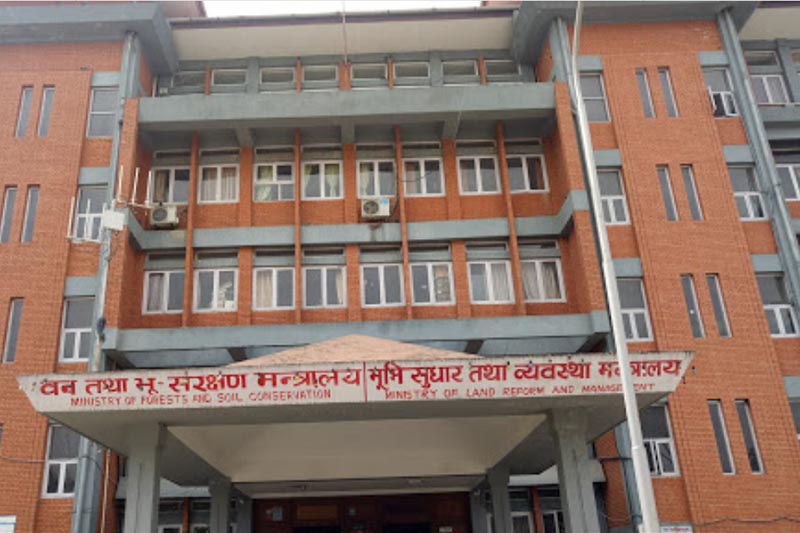‘Nepal-led govt facilitated land grab in 2010’
- Dambar Shrestha led the ministry of land reforms then
Kathmandu, April 12
A committee formed by the government to study cases of land grab has concluded that a decision taken by the Cabinet of the government led by Madhav Kumar Nepal in 2010 had facilitated transfer of public land, including 113 ropanis in Baluwatar, in the names of individuals.
The Cabinet decision on 4 May 2010, proposed by the then ministry of land reforms and management gave the Land Revenue Office, Dillibazaar, the authority to register and transfer ownership of any land without following due process. CPN-ML leader Dambar Shrestha led the ministry at that time.
This decision not only validated all the malicious decisions taken by the LRO in the past, but also paved the way for maliciously transferring ownership of public land in the names of individuals in the future, according to the report of the committee formed on 29 June 2018 under former joint secretary Sharada Prasad Trital.
The report states that the Cabinet decision was erroneous in many ways, enough to prove that it was motivated by ill intention. The proposal was tabled in the Cabinet arbitrarily without mentioning any legal provisions. But it got endorsed. The Cabinet decision to directly authorise the LRO to register and transfer ownership of land without following due legal process bypassed line authorities, such as the land reforms ministry and division, eliminating any chances of supervision.
Upon receiving the Cabinet decision, the LRO completely ignored the due process and started registering land under its own discretion, according to the report.
The committee has recommended that a new Cabinet decision should scrap the erroneous decision of 4 May 2010, stating that it was against the law and the Supreme Court precedent.
Under the Land Acquisition Act, the government led by the then king Mahendra in 1964 had decided to acquire six Rana-era castles — Mahavir Bhawan, Naxal; Harihar Bhawan, Lalitpur; Sita Bhawan, Naxal; Laxmi Niwas; Babar Mahal, Kuriya Gaun and Lalita Niwas, Baluwatar — by offering due compensation. The six castles covered a total land area of 1,298 ropanis. Of the 299 ropani land at Lalita Niwas, which houses official residences of the prime minister, chief justice, speaker and the office building of Nepal Rastra Bank, 284 ropanis were acquired by the government by paying due compensation, according to the report.
The remaining 14 ropani and 11 ana land belonging to late Nepali Congress leader Subarna Shumsher Rana was acquired by the government without paying due compensation. In fact, the entire land belonged to Subarna Shumsher Rana’s family.
Of the 284 ropanis of the acquired land, residences of prime minister, chief justice, speaker and Nepal Rastra Bank’s building covers around 172 ropanis. The remaining 112 ropanis were embezzled by land mafia in collusion with officials of LRO, Dillibazaar, according to the report.
After the restoration of democracy in 1990, the Krishna Prasad Bhattarai’s Cabinet decided to return the land the government had acquired without compensation to its owners. Bhattarai government had also decided to return only the portion of the land that did not exceed the land ceiling.
However, the Land Revenue Office returned even those land plots that the government had duly acquired by paying compensation, according to the report.
The report adds that the Land Revenue Office transferred the ownership of 112 ropani and four ana land of Lalita Niwas in the names of Sunita Rana, Shailaja Rana and Rukma Shumsher JB Rana of Subarna Shumsher Rana family.
The report stated that three ropani and 10 ana land of the prime minister’s official residence compound in Baluwatar and two ropani and 14 ana land of chief justice’s residence compound in Baluwatar were also transferred in the names of individuals in 1992.
The Cabinet decision of Madhav Nepal-led government had validated all these acts of the LRO, the report states.
READ ALSO:






